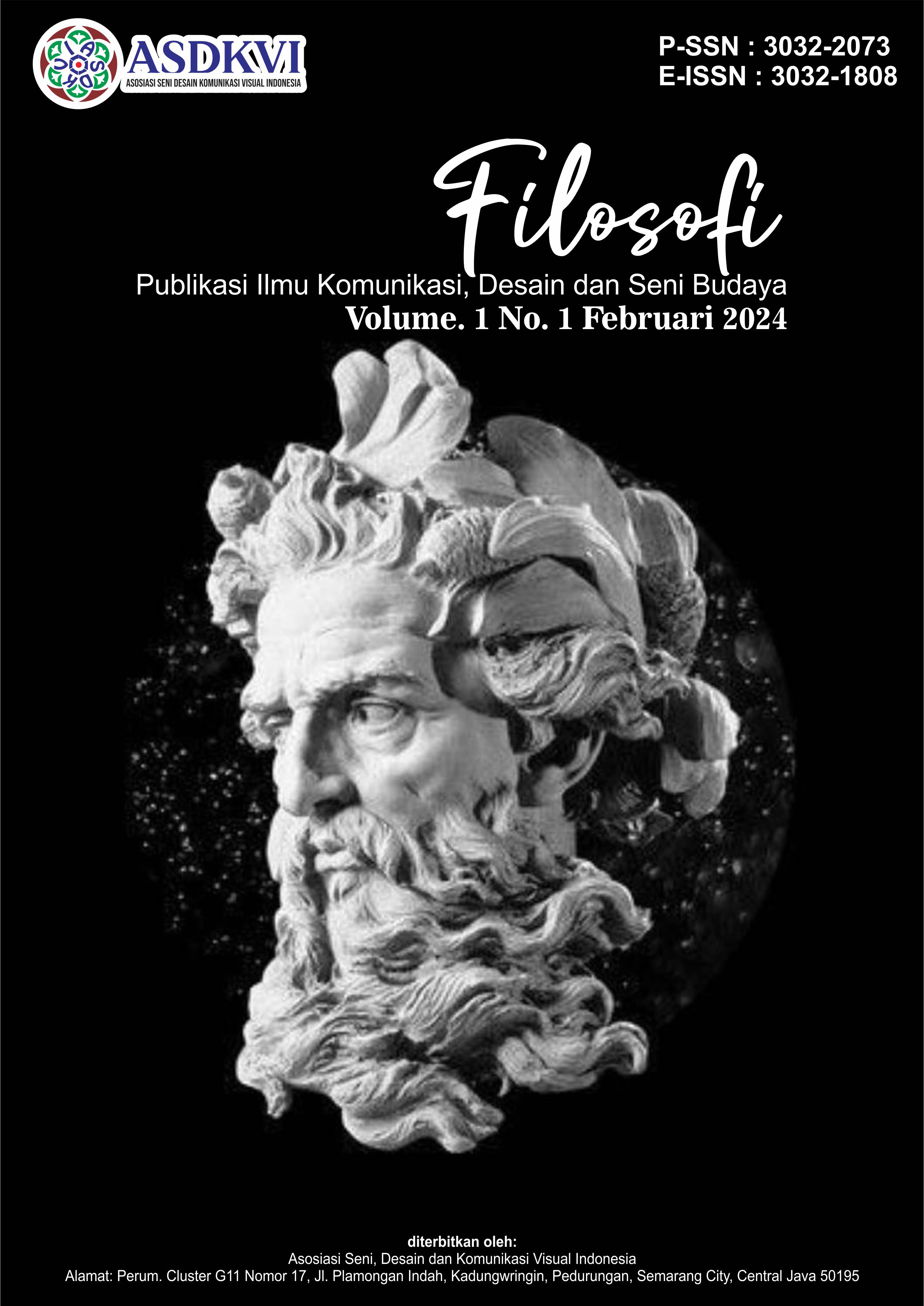Hubungan Penggunaan ChatGPT Dengan Pemenuhan Kebutuhan Mahasiswa
DOI:
https://doi.org/10.62383/filosofi.v1i1.57Keywords:
Uses and Gratification, Learning Needs, Uses of ChatGPT, Correlation StudyAbstract
The rise in the phenomenon of using Artificial Intelligence such as ChatGPT and the very high trust of the Indonesian people in the development of Artificial Intelligence, especially the Gen Z generation group with Higher Education status (students), has given rise to debate in terms of the impact of its uses as a technology that helps the learning process. On the positive side, ChatGPT can provide personalized and interactive learning, while on the negative side, ChatGPT can provide incorrect and inaccurate information. Meanwhile, penetration of its uses can no longer be avoided because it is easy to access, so the good and bad sides will continue to be felt, especially for its users. Moreover, until now there is still very little research on how this technology can help fulfill the needs of students within the research campus, especially the most important need for them as someone who is pursuing higher education, namely the need for satisfying learning. Therefore, this research aims to explain the relationship between the uses of ChatGPT and the fulfillment of learning needs for students at the Faculty of Communication Sciences, Padjadjaran University with the help of the Uses and Gratification theory approach. The research method usesd is a quantitative method with a type of correlational study design using the Spearman Rank correlation test The results of this study show that there is a positive and significant relationship between the uses of ChatGPT and fulfilling the learning needs of students at the Faculty of Communication Sciences, Padjadjaran University with a correlation coefficient of 0.834. So, it can be concluded that the higher the uses of ChatGPT, the higher the fulfillment of students' learning needs, which means that frequent uses of ChatGPT can indicate that it is closely related to satisfying learning needs.
References
Arsyad, M.A, & Azhar. (2014). Media Pembelajaran. Jakarta. Raja Grafindo Persada.
Baidoo-Anu, D., & Owusu Ansah, L. (2023). Education in the Era of Generative Artificial Intelligence (AI): Understanding the Potential Benefits of ChatGPT in Promoting Teaching and Learning. https://www.researchgate.net/publication/369385210_Education_in_the_Era_of_Generative_Artificial_Intelligence_AI_Understanding_the_Potential_Benefits_of_ChatGPT_in_Promoting_Teaching_and_Learning
Creswell, J. W., & J David Creswell. (2018). Research Design: Qualitative, Quantitative, and Mixed Methods Approaches. Sage Publications, Inc.
Duarte, F. (2023, July 13). Number of ChatGPT User (2023). Exploding Topics. https://explodingtopics.com/blog/chatgpt-usesrs
Fraenkel, Jack R. And Wallen, E. Norman (2009). How to Design and Evaluate Research in Education. New York. McGraw-Hill Companies
Kompasiana.com. (2023, March 1). Menggunakan Chat GPT dalam Pembelajaran. KOMPASIANA. https://www.kompasiana.com/assabiq90/63ff379e08a8b53a59138152/menggunakan-chat-gpt-dalam-pembelajaran
Metzler, K. (2022, July 12). How ChatGPT Could Transform Higher Education. https://www.socialsciencespace.com/2022/12/how-chatgpt-could-transform-higher-education/
Minasny, B., Fiantis, D., & Widyatmanti, W. (2023, March 29). Penggunaan ChatGPT tak perlu dilarang: layanan AI bisa mendukung riset dan pendidikan. The Conversation. https://theconversation.com/penggunaan-chatgpt-tak-perlu-dilarang-layanan-ai-bisa-mendukung-riset-dan-pendidikan-201686
Morissan, M.A, Andy Corry dan Farid Hamid. (2010). Teori Komunikasi Massa. Bogor: Ghalia Indonesia
Nugraha, Y., Masnita, Y., & Kurniawati, K. (2022). Peran Responsiveness Chatbot Artificial Intelligence Dalam Membentuk Customer Satisfaction. JURNAL MANAJEMEN DAN BISNIS SRIWIJAYA, 20(3), 143–158. https://doi.org/10.29259/jmbs.v20i3.18528
OpenAI. (2022, November 30). Introducing ChatGPT. OpenAI; OpenAI. https://openai.com/blog/chatgpt
Populix. (2023). Populix | Platform Survei Online Berbayar dan Analisis Riset Pasar. Populix. https://info.populix.co/product/consumer-trend-report/download?report=2023-06-the-future-of-work#
Rudolph, J., Tan, S., & Tan, S. (2023). ChatGPT: Bullshit spewer or the end of traditional assessments in higher education? Journal of Applied Learning & Teaching, 6(1). https://doi.org/10.37074/jalt.2023.6.1.9
Russel, S., & Norvig, P. (2020). Artificial intelligence: a Modern approach. (4th ed.). Prentice Hall.
Schäfer, M. S. (2023). The Notorious GPT: science communication in the age of artificial intelligence JCOM 22(02), Y02. https://doi.org/10.22323/2.22020402
Setiawan, A., & Luthfiyani, U. K. (2023). Penggunaan ChatGPT Untuk Pendidikan di Era Education 4.0: Usulan Inovasi Meningkatkan Keterampilan Menulis. JURNAL PETISI (Pendidikan Teknologi Informasi), 4(1), 49–58. https://doi.org/10.36232/jurnalpetisi.v4i1.3680
Sugiyono (2019). Metode Penelitian Kuantitatif, Kualitatif, dan R&D. Bandung : Alphabet.
Susnjak, T. (2022). ChatGPT: The End of Online Exam Integrity? http://arxiv.org/abs/2212.09292
Vinney, C. (2019, April 19). What is uses and gratifications theory? Definition and examples. ThoughtCo. https://www.thoughtco.com/uses-and-gratifications-theory-4628333
Wesche, J. (2023). auf LinkedIn: #chatgpt #openai. LinkedIn. Retrieved from https://www.linkedin.com/posts/juliuswesche_chatgpt-openai-activity-7016341359661879296-ROCy
Whiting, Anita & Williams, David. (2013). Why people uses social media: A uses and gratifications approach. Qualitative Market Research. 16. 10.1108/QMR-06-2013-0041.
Downloads
Published
How to Cite
Issue
Section
License
Copyright (c) 2023 Filosofi : Publikasi Ilmu Komunikasi, Desain, Seni Budaya

This work is licensed under a Creative Commons Attribution-ShareAlike 4.0 International License.





